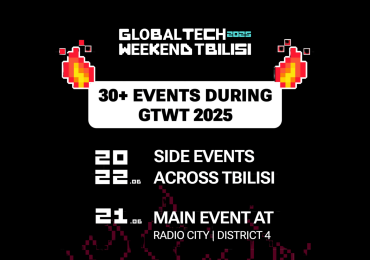Introduction
Electricity as a basic source of the country’s energy stability and independence, economic prosperity and the subject of the cross-border trading has a specific feature. Characters of the commercial treaty regulating all of rules are mostly private, but considering that energy security is one of the vital parts of the country’s general security, it also has the public meaning. In most countries strategically important transmission function of the electricity is under public owned corporations and/or bipolarly this function is outspreaded on behalf of the oligopoly public companies. This factor adds even more public weight of such bargains.
Using achievements of the modern technological goods especially in the renewable energy (RE) sector from time to time has more important meaning than we could imagined before. Artificial Intelligence (AI) as the last echo of the recent development may serve on behalf of the RE security. This article tries to proof this postulate describing: importance of the AI and several fundamental directions how can we use AI in RE, appropriate risks connecting with the use of AI and EU regulatory framework of AI.
- Why AI is important for electro energy sector?
In modern world considerably enlarged demand on electro energy is a consequence of two basic factors: 1) Due to an ecological reason to reduce fossil fuel emissions as one of the main declared goals of the sovereign states; 2) developing the high technology creates an increased demand on the electricity including electric transportation and total internalization. Such expectation to use an increased volume of an electricity and the transition of energy systems to decentralized systems ensured more importance and complexity of the electro energy industry. In order to handle such complicated tasks, there is a necessity to create something new for managing and supporting the functionality of the full electro energy system. For today traditional human resource may not fully answer on the challenges of this expectation and in parallel to use appropriate algorithms revealed on the proper AI alternatives for the benefit of the different sides of the RE.
The World Economic Forum[1] has published a new study on how AI can be used to accelerate a more equitable energy transition and build trust for the technology throughout the industry. As the impacts of climate change become more visible worldwide, governments and industry face the urgent challenge of transitioning to a low-carbon global energy system.
Digital technologies particularly AI are key enablers for this transition and have the potential to deliver the energy sector’s climate goals more rapidly and at lower cost.[2]
Because of the different geopolitical and economic reasons RE is characterized as a high risky infrastructure. Accordingly, an AI serving the RE management and operation should be considered as a high risky system in superlative degree. In its turn, the security of AI system ensuring straightened functionality of the whole RE infrastructure can be described as the general goal of the modern energy policy, which aim to ensure its energy independence and stability. It is a one task to install a lot of proper HPPs, wind electro energy stations and solar panels in order to develop the RE potential, but in parallel the challenge is to create and develop AI systems, ensure technical security and stability of its legitimacy in local and international level.
Except of the RE distinct producer objects, the whole electro energy system needs the stability and sustainability of functioning and operation the local and centralized grids, unified energy transition, electro energy distribution networks, supply for the final direct costumers and the domestic and international trading including an optimal balance of supply and demand of electricity.
As environment is adding more pressure on the energy sources, is not surprisingly that RE become the star of the energy grids as result of the human need to control the energy supply. The energy from renewables increases and the challenge is to find methods to manage it as to respond to global demand of clean and cheap energy. Cost and environment concerns are important both for consumers, producers and governments. Under these circumstances, solutions should be found. AI represents a major opportunity to meet these needs of today’s societies. The advantages of its large deployment include the possibility of performing prediction and generalization at high speed, flexibility, explanation capabilities and symbolic reasoning.
While the historical evolution of AI has to show significant milestones, the recent developments of neural networks research, cognitive computing and machine learning, promote new unforeseen capabilities for energy management, monitoring and optimization.
A key question related to the adoption of AI in RE sector is related to the capacity of AI to enable optimization systems as well as personalization and parametrization of consumption and production. Visioning smart agents powered by smart grid technologies and AI algorithms in the energy sectors requires the analysis of social and economic factors beyond the technical capabilities.[3]
Sectors, where AI would be useful in RE. AI is highly needed in the energy sector, as it operates with a large amount of data and increasingly complex systems. Particularly, the RE sector can be stimulated by AI especially through a better monitoring, operation, maintenance and storage of RE and a timely system operations and control. The integration of RE into power systems refers to the following major applications of AI – RE generation, considering the variability of renewable sources and the supply volatility; – grid stability and reliability, safety operations; – accurate demand forecast and weather forecast; – efficient demand-side management; – energy storage operations; – market design and operations; – better connectivity between grids components and with micro grids.
Supply-demand. The final objective for RE grids is the maximization of infeed from a production capacity considering the volatility and related uncertainty cost. AI is used to forecast the energy demand for a better adjustment to peaks. It is also important for managing the energy demand and supply from decentralized production systems (private users that produce energy from renewable sources) which request energy from the grid when the production is lower than their needs and send back into the grid the supplementary energy when they produce more than they consume. It would enable continuous energy exchange between consumers and providers.[4]
- Several fundamental directions how can we use AI in electro energy industry
The basic requirement for AI in the energy system is to make the whole system simplified, which means to give the timely, accurate, reasonable and effective information for humans in order to make one or another decision while dispatching, distributing, supplying and trading electricity. It may be a complex information containing several options and with the grading smart tables of possible recommendations and/or decisions which makes easier decision-making process.
Thanks to energy system complexity, AI has been gradually integrated into every part of the energy system, from load and generation forecasting to infrastructure management categorized four main fields of AI application as (1) simulation and improvement, which is related to simulation and scenario planning of energy systems and prediction of weather issues and wind speed, (2) investment and markets simulation, (3) sustainability and safety issues, such as predictive maintenance and providing cyber and physical protection tasks, and (4) services oriented to the customer, such as smart home management, micro-generation, and storage integration with virtual power plants, energy bundling and billing.[5]
Modern AI technologies actually increases certainty for the predictions of energy consumption and analyzes the statistical data of an important matters which affected on the certain energy market. It gathers produced energy from the different sources and distributes it rationally considering the exactitude of the supply and demand requirements of the market. As a result, it in real time estimates the hypothetical generation, consumption and demand of the electricity.
The necessity of the smart prediction of the electro energy volumes’ is one of the fundamental in commercial internal and external trading of the electricity. Advanced AI machinery can find an exact reasons of the balancing and unbalancing of the supply and demand of the electricity and in real time offers an appropriate option ensuring the balancing electricity accumulation and distribution. In its turn it positively impacts on the different indicators, such as the decreasing the risks caused by the human factors, operational management and predicting the emergent circumstances.
It is noteworthy that AI is already being used to optimize clean energy development. In the Amazon Basin, hydroelectric dam constructors usually develop one dam at a time without a long-term strategy. A group of experts created an AI simulation to find dam sites that can produce the lowest greenhouse gas emissions. The AI model has identified more complex and surprising set of proposals for reducing greenhouse gas emissions than ever before. In the current situation of more than one billion people having no electricity, the AI can help with electricity supply by giving the possibility to use it and organizing zero-carbon electrification by means of isolated micro-grids. In 2019, AI and machine learning experts published a document titled “Tackling Climate Change with Machine Learning”. The authors of the report were consulted by renowned experts. The document suggests 13 areas in which machine learning can be deployed: electricity systems, transportation, buildings and cities, industry, farms and forests, carbon dioxide removal, climate prediction, societal impacts, solar engineering, individual action, collective decisions, education, finance. Several points from the report are considered as under
improving energy forecasts and collecting infrastructure data is especially relevant to the transition for more RE sources. The AI can identify construction marks and properties from satellite data to use computer self-learning program to detect how much energy is consumed at the city level. These techniques can determine buildings to be upgraded in order to make them more effective.[6]
By means of enhanced sensory systems and automated data analysis, AI systems can enable a much faster and much more efficient management of technological systems and critical infrastructure. The system includes forecasts to predict the electricity generation of solar panels and wind turbines, which are coordinated with flexible energy consumers such as production lines that can run at different times or with commercial refrigerators that can be turned off for a few hours during times of low electricity production without significant temperature increases. In the EU funded research project FUDIPO6, for example, control algorithms were developed to improve the performance of a biological wastewater treatment plant, measuring the quality of incoming waste, and lowering the aeration demand. The latter reportedly constitutes about 50% of a wastewater treatment plant’s electric energy consumption.[7]
As in other sectors, AI technologies can further optimize RE production. Reinforcement learning has for example been used to maximize electricity production from movable solar panels or from wind turbines. It can determine optimal placement of turbines in wind farms. Machine condition monitoring systems are further being applied to wind turbines, in particular in remote areas and offshore sites for fault detection, automatic fault identification and prognosis of failure which enhances availability, production and reduces maintenance costs of wind farms. Other AI applications are able to detect faults in rooftop solar panels.[8]
The production of energy using renewable sources is uncertain, depending on natural environment which cannot be forecasted perfectly. The increasing penetration of RE in the energy sector emphasis the need for accurate forecasting of variable resources. The objective is to reduce the forecast error, so that the deviations do not strongly affect the stability, in terms of dispatching requested quantities and to achieve power grid balance. Supply interruptions can determine supplementary cost for the producer. The demand is highly inflexible in responding to changing in power supply: the consumers adjust their demand to their needs and activities, not to current supply or environment conditions. Correspondingly, the solutions for balancing the variable and uncertain supply of RE are on the one hand, other power generators, more controllable in terms of inputs (but not in terms of prices, availability or environment pressure) such as coal, gas etc. and on the other hand, integrating AI. The cost of using one of these solutions should be understood as part of the total (opportunity) cost of using RE.[9]
Using AI in RE is a necessity, considering increasing interconnections between grids as a result of large volume of data and information. Centralized intelligent control refers to the platforms needed for managing the supervised sites. AI could manage this exponential growing data, providing methods to cope with the fluctuations of RE based on practice and forecasting. These will help the RE to be better integrated into the energy chain and will better exploit the potential of these sources irrespective of their variability.[10]
- Accompanying risks
Like in other sectors, in electro energy industry there are identified several risky factors using AI. In particular: cybersecurity and an identity of the human’s labor and the quality of protection the classified information is considered as some high risky elements.
Taking into account, that the electro energy system is one of the critical infrastructures characterized with the sensitive geopolitical, economic and commercial factors, it contains as state classified information and also the commercial and personal data. A high degree of protection of this data has a vital meaning in modern world.
On the one hand the legal mechanisms including efficient enforcement tools will be able to reduce these risks and on the other hand the technical trustworthy of AI systems may exclude and/or in some events mitigate them.
Differ social risks, such as the working of AI systems in “shadow” reduce the meaning of the labor of human, types of the cyber-attacks and during trading to illegally manipulate with the forecasting information, prices and unreasonable excess to the internal information and manipulate with the prices of the electricity. These risks may cause the grid networks unstable, commercial loses and political manipulations. Mentioned and related risks are considered as a central negative factor of using and further development of AI systems in RE industry.
- EU regulatory framework
AI fast evolving as a technology and gaining growing application in the energy and other sectors, has come under the eye of the European Commission (EU), with a newly released proposal for its regulation. As reasons for the regulation, the Commission cites AI’s benefits in improving predictions and optimizing operations and resource allocation but states that it can also bring about new risks or negative consequences such as not respecting rights for individuals or society.[11]
EU has pursued a precautionary approach and has introduced and proposed some regulations, including the General Data Protection Regulation (GDPR) (27.04.2016), the Data Governance Act (25.11.2020), the Digital Markets Act (15.12.2020), the Digital Services Act (15.12.2020), the Proposal for Artificial Intelligence Act (AIA) (21.04.2021) and recently the Data Act (23.02.2022). Although these regulations and rules do not all directly focus on AI, they can have indirect effects on the data training and algorithms used in AI development.[12]
On 21 April 2021, the EU published its proposal for a new AIA. The basic regulatory objectives of the act consist of the following issues: 1. Due to the legal certainty promoting AI novelties and transactions; 2. Considering the fundamental rights ensured by the EU law, ensuring the full compliance of AI technical opportunities; 3. Constructing the special market space including to support AI software, application and autonomous robots’ markets. Besides, AIA includes an approach of the risky measures to develop AI management.[13]
AIA can be considered as the first effort to regulate different operations in diverse industries while using AI. There are expectations, that a lot of countries in local level will develop their national legal base to adequately meet the requirements of the AI in RE sector.
Levan Kokaia – Currently serves as a corporate lawyer at Czech hydroelectric energy companies and as an of Counsel at law firm Suknidze & Partners. Master in Law. Author of more than 50 publications. Guest lecturer and trainer at GIPA.
[1] Geneva, Switzerland, 01 September 2021
[2] https://www.weforum.org/press/2021/09/artificial-intelligence-energy-transition
[3] https://ieeexplore.ieee.org/stamp/stamp.jsp?arnumber=9076660. Page 2
[5] http://essay.utwente.nl/92439/1/Nouri_MA_Behavioural%20Management%20and%20Social%20sciences.pdf. Page: 11
[6] https://grassrootsjournals.org/gjnr/nr-04-03-10-lozo-onishchenko-m00247.pdf Page: 5
[7] https://www.europarl.europa.eu/RegData/etudes/STUD/2021/662906/IPOL_STU(2021)662906_EN.pdf Page: 19
[8] Ibid. Page: 22-23
[9] https://ieeexplore.ieee.org/stamp/stamp.jsp?arnumber=9076660. Page 3.
[10] Ibid. Page 5
[11] https://www.smart-energy.com/digitalisation/ai-in-europes-energy-sector-in-line-for-regulation/
[12] http://essay.utwente.nl/92439/1/Nouri_MA_Behavioural%20Management%20and%20Social%20sciences.pdf (Page: 7)
[13] More detailly, visit: https://eur-lex.europa.eu/legal-content/EN/TXT/?uri=celex%3A52021PC0206
Levan Kokaia – Masters in law. Attorney at Law. Legal consultant on corporate governance issues. Currently serves as a corporate lawyer at one of the energy companies. Member of Georgian Bar Association. Author of more than 45 publications. Guest lecturer and trainer at GIPA.










